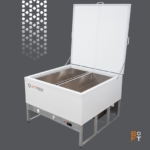Introduction to B88221141
In the fast-paced world of technology, performance is everything. As systems evolve and demands grow, finding components that can keep up becomes crucial. Enter B88221141—an enigmatic yet powerful piece in the puzzle of high-performance systems. This unique identifier may not be familiar to everyone, but its significance in enhancing efficiency and speed cannot be underestimated.
Whether you’re a tech enthusiast or a professional searching for solutions to maximize system capabilities, understanding B88221141 will open new doors for innovation. Join us as we delve into its history, advantages, real-world applications, and future potential within the realm of advanced technology. The journey promises to illuminate why this component could be your next best ally in crafting superior systems.
History and Development of B88221141
The journey of B88221141 began in the early days of high-performance computing. Developed to meet the growing demands of complex applications, its inception marked a significant milestone.
Initially conceived by a team of engineers focused on enhancing system efficiency, it underwent rigorous testing and modifications. Each version aimed to tackle specific industry challenges.
As technology evolved, so did B88221141. It adapted to advancements in hardware and software, ensuring compatibility with emerging standards. This flexibility played a crucial role in its widespread adoption across various sectors.
Over time, partnerships with leading tech companies further accelerated its development. Collaborative efforts led to innovations that expanded its capabilities beyond initial expectations.
Today, B88221141 stands as a testament to continuous improvement within high-performance systems. Its history reflects not just technological progress but also an unwavering commitment to excellence.
Advantages of using B88221141 in High-Performance Systems
B88221141 offers a range of advantages that make it ideal for high-performance systems. Its robust architecture ensures optimal performance, allowing systems to handle extensive workloads seamlessly.
One key benefit is its efficiency in processing data. This leads to reduced latency and faster response times, essential for applications requiring real-time analytics or quick decision-making.
Moreover, B88221141 enhances scalability. As demands increase, this component adapts without compromising system stability or speed.
The flexibility of integration further sets it apart. It can be easily incorporated into various existing infrastructures, minimizing the need for complete overhauls.
Users appreciate its reliability under pressure. High-performance systems often face intense operational challenges; B88221141 rises to these occasions with consistent performance metrics.
Real-Life Examples of B88221141 in Action
B88221141 has made its mark in various high-performance systems across multiple industries. One notable application is in data centers, where it enhances processing speed and efficiency. Companies using B88221141 have reported significant reductions in latency, allowing for quicker data retrieval.
In the automotive sector, manufacturers utilize B88221141 to power advanced driver-assistance systems (ADAS). This integration improves real-time decision-making capabilities that ensure safer driving experiences.
Another compelling example can be found in telecommunications. Service providers leverage B88221141 for optimizing network performance. The result? Faster connection speeds and improved service reliability for consumers.
Gaming companies are adopting this technology to elevate user experiences through enhanced graphics rendering and reduced load times. This shift not only captivates players but also keeps them engaged longer than ever before. Each implementation showcases how versatile and impactful B88221141 truly is across different domains.
Potential Drawbacks and Limitations of B88221141
While B88221141 offers remarkable benefits, it does come with certain limitations. One notable drawback is its complexity in integration. High-performance systems often require specialized knowledge to implement this component effectively.
Additionally, the cost associated with B88221141 can be a barrier for some organizations. Budget constraints may limit access to cutting-edge technology that could enhance performance.
Thermal management also presents challenges. As systems utilize B88221141 under heavy loads, they can generate significant heat, necessitating advanced cooling solutions.
Compatibility issues may arise when integrating with existing infrastructure. Ensuring seamless communication between components is crucial but not always straightforward.
The rapid evolution of technology means that reliance on any specific component like B88221141 could lead to obsolescence if newer alternatives emerge. It’s essential for businesses to stay agile and adaptable in their tech choices.
How to Implement B88221141 in Your High-Performance System?
Implementing B88221141 in your high-performance system involves a few key steps. First, assess your current architecture and determine compatibility. Ensure that existing components can support B88221141’s requirements without undergoing extensive modifications.
Next, gather necessary resources and documentation related to B88221141’s. Familiarize yourself with the specifications and best practices for integration. This knowledge will guide you through the setup process smoothly.
After preparation, initiate the installation phase. Follow a structured approach to integrate B88221141’s into your system framework effectively. Monitor performance metrics during this stage to identify potential issues early on.
Once implemented, conduct rigorous testing under various scenarios. This helps validate that B88221141’s is functioning as intended within your high-performance environment while allowing for optimization where needed.
Future Outlook for B88221141 and Its Impact on Technology
The future of B88221141’s holds immense potential. As technology continues to advance, its role in high-performance systems is likely to expand significantly.
Emerging industries are already exploring innovative applications for B88221141’s. This will drive demand and inspire new developments that enhance efficiency and performance.
With the rise of AI, machine learning, and IoT devices, integrating B88221141’s could redefine operational standards. Companies may find ways to streamline processes while reducing costs through this powerful tool.
Moreover, as data volumes soar, B88221141’s capacity for handling complex tasks efficiently becomes even more crucial. Future iterations might introduce greater adaptability and scalability options.
Investors are watching closely as advancements unfold. The intersection of hardware capabilities with software optimizations powered by B88221141’s can lead to groundbreaking technological innovations across various sectors.
Conclusion
B88221141 stands as a vital component in the landscape of high-performance systems. Its development has been shaped by the evolving needs of technology, making it indispensable for modern applications. The advantages it offers—from increased efficiency to enhanced system capabilities—highlight its importance in various sectors.
Real-life examples demonstrate how B88221141 is already making waves across industries, showcasing its effectiveness and reliability. However, like any technology, it comes with potential drawbacks that users should consider carefully before implementation.
Implementing B88221141 requires a well-thought-out strategy tailored to your specific requirements. As technological advancements continue to unfold, the future outlook for B88221141 appears promising, suggesting an even greater impact on systems design and performance.
By understanding this remarkable component and leveraging its strengths while managing its limitations, you can position yourself at the forefront of innovation in high-performance systems.
ALSO READ: Pcode Com Ng: Your Ultimate Guide to Online Solutions in Nigeria
FAQs
What is B88221141?
B88221141 is a high-performance system component designed to enhance efficiency, reduce latency, and improve scalability in various industries.
How does B88221141’s improve system performance?
B88221141’s optimizes data processing, reduces response times, and enhances system scalability, ensuring seamless operation under heavy workloads.
What are the real-world applications of B88221141’s?
B88221141’s is used in data centers, automotive systems (ADAS), telecommunications, and gaming to boost speed, reliability, and user experience.
What are the limitations of using B88221141’s?
Its integration complexity, cost, thermal management needs, and potential compatibility issues with existing infrastructure are key limitations.
What is the future outlook for B88221141?
As technology advances, B88221141 is expected to play a larger role in AI, IoT, and other emerging fields, enhancing performance and scalability in high-performance systems.











